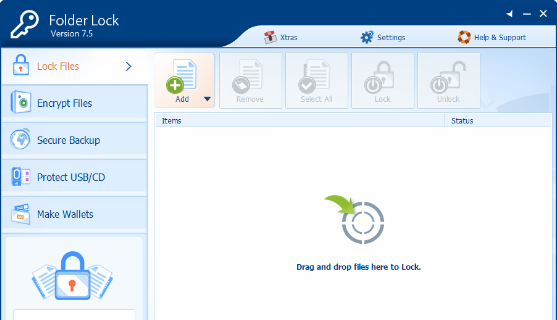How to Restore Folder Lock 7.x Password
Folder Lock 7.x is a fairly popular piece of software that lets you set a password to your folders. You can then use these folders to store anything you would like to keep out of prying eyes. This may include anything from photos, to private documents, and many people use it as it is fairly simple and works well.
The thing with locking software is that it requires a password, and we, as humans, have a tendency to forget passwords. Some may suggest writing them down somewhere, but that is by no means a safe practice, especially if you have something important locked by the passwords. This means that if you forget the password for your folder(s), you may lose access to them, and consequently, to the data inside.

Fortunately, if this is the case for you, there are a few things that you can do to regain access and get your files back, unmodified. Take a look at the methods below to see how.
Method 1: Uninstall Folder Lock 7.x.
Simply uninstalling it from the Control Panel won’t do it, as there is a password that you don’t know, but you can edit a registry key that does away with that, and then uninstall it.
- Press the Windows key on your keyboard and type in regedit, then open the result.
- Navigate to the following key:
HKEY_CURRENT_USER/Software/New Software//Uninstall
- Edit the key’s value, and set it to 0.
- Press the Windows key again, and type in Change or remove a program, then open the result.
- From the list of software, find Folder Lock 7.x, select it, and click the Uninstall button.
- Follow the instructions to complete the wizard, and reboot your device to save the changes. You should now have access to the folder and contents.
Method 2: Find your files in the hidden folder.
- Open the registry using step 1 of the previous method.
- Delete the following string value:
HKEY_CURRENT_USER/Software/New Software//LastLockerPath
- Open Control Panel by pressing the Windows key, and typing in Control Panel, then opening the result.
- Open Folder Options, or File Explorer Options, depending on your operating system version.
- Go to the View tab.
- Uncheck both “Hide protected operating system files” and “Show hidden files, folders and drives”.
- Go to your Documents folder, and you will see the File Locker. Open it, and your files should be inside.
Method 3: Change the name of the parent directory.
applies your password protection to a folder using its location. This means that if you change the location path of the folder, the protection doesn’t apply anymore. However, since the folder itself is locked, you can change the name, and consequently the location, of the parent folder.
- Go to your locked folder, but don’t open it.
- Click the Up navigation button to go one folder back.
- Right-click the parent folder where the folder containing your locked files is located.
- Choose ‘Rename‘ from the menu, and change the name to something random. For example, if your folder was C:\Data\Images, it should now be something along the lines of C:\Data1\Images. This will remove the protection because, in the system’s eyes, this is now a completely different folder. Thus, this should give you access to your files.
If you’re having problems with forgetting your passwords, maybe you should use a password manager – there’s enough choice out there and you will undoubtedly find one that fits you. However, until then, use any of the methods above to regain access to your locked files.